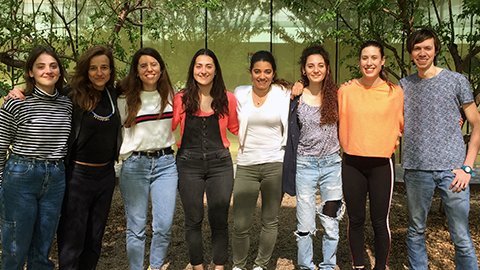New phenomenon identified in germ cell formation as an evolutionary strategy

25/03/2019
Meiotic recombination is a fundamental process for all sexually reproducing organisms, given that it increases genetic diversity through an exchange between homologous chromosomes, and at the same time allows the chromosomes to transfer their material wholly, with no structural and/or numerical alterations, to the next generation.
This happens through meiosis, during the formation of germ cells. Meiosis is a type of specialised cell division which gives way to the formation of haploid gametes (ova and sperm) with only one copy of chromosomes through two consecutive cell divisions preceded by one round of DNA replication.
The study, published in the journal Cell, worked with several species - fungi, plants and mammals - to reveal that the organisms generate heterogeneous germ cell populations through a phenomenon of genetic recombination index variability. During the gametes formation process, a pool of cells is generated with high recombination indexes and also with low indexes. These different indexes correlate among the chromosomes of one same cell and would be the result of the shape in which the DNA is packed into the cell's nucleus.
“The results obtained suggest that the generation of this diversity within one same organism could form part of an evolutionary strategy of which would allow the species to diversify their survival options when faced with specific environmental conditions. Thus, the germ cells with low recombination levels could be benefited by a static environment, while high levels could be favoured by a fluctuating environment”, explains co-author Aurora Ruiz Herrera, researcher of the Department of Cell Biology, Physiology and Immunology and the Institute of Biotechnology and Biomedicine (IBB) of the UAB, where she directs the Animal Genomics research group.
The new data points to the fact that the variation in recombination indexes in germ cells is an intrinsic characteristic of meiosis and apparently common in the majority of sexually reproducing organisms, providing the potential of increasing the power of recombination in the evolutionary adaptation of the species.
The research was conducted through the analysis and modelling of the recombination taking place within the cell. These mechanisms are visible through a microscope, given that the molecular mechanisms involved in the recombination are highly conserved among the species.
The study implies a significant advance in the study of mechanisms which generate and regulate the genetic recombination. Determining these mechanisms is fundamental, since the creation of genetic diversity through recombination is crucial for organisms to optimise their adaptation to the environment. Also because the deregulation of this process can produce diseases such as infertility and alterations in the number of chromosomes, such as trisomy 21.
The study was led by Shandong University, China, and Harvard University, USA. In addition to the UAB, the study also included the involvement of the Paris-Sud University, France, and Nantong University,China.
Germ cells of tigers (Panthera tigris) showing the localisation of the recombination events (yellow dots) on top of the protein axis of the homologous chromosomes (red lines). The localisation of centromeres in each chromosome is represented with blue points.
Original article: Shunxin Wang, Carl Veller, Fei Sun, Aurora Ruiz-Herrera, Yongliang Shang, Hongbin Liu, Denise Zickler, Zijiang Chen, Nancy Kleckner and Liangran Zhang (2019) Per-Nucleus Crossover Covariation and Implications for Evolution. Cell 177, 1–13, doi: https://doi.org/10.1016/j.cell.2019.02.021